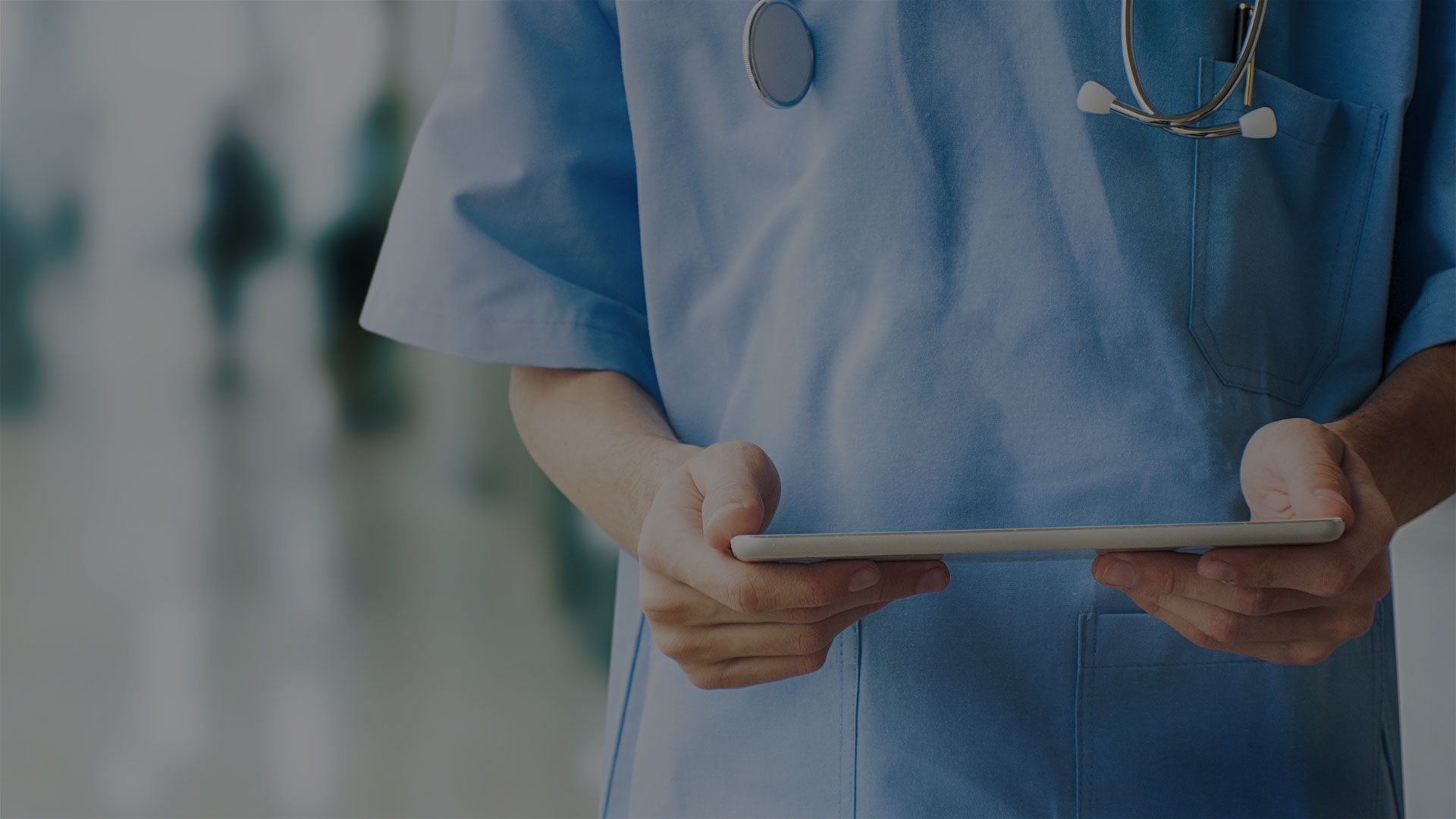What Tech Can Do to Help Healthcare Bounce Back

It’s no secret that 2020 brought unprecedented challenges to the healthcare industry. While health systems and networks stretched themselves to respond to the global pandemic, non-emergency care and elective procedures were postponed or cancelled, leading to a large drop in revenue, despite the increased demand for healthcare.
Digital technology has been playing a significant role in helping businesses across industries adapt to the new normal. However, a 2019 survey of physicians and consumers found that just 32% of doctors and 27% of patients rated their healthcare system as performing well in terms of introducing new digital technologies. Digital transformation in healthcare has remained a slow process.
Why does an industry so closely related to science and technology lag in adopting new digital solutions? There are many reasons, including a relative lack of financial incentives compared to other industries, but the most important is the risk faced by healthcare providers.
For most industries, confusion or errors caused by unfamiliar technology may result in minor setbacks or inconveniences that can be straightened out relatively easily. However, in healthcare, mistakes can literally be the difference between life and death. This means healthcare providers are especially reluctant to take a chance on a new, potentially disruptive solution when current workflows are getting the job done.
How COVID-19 is Changing Healthcare
As medical care systems work to recover from the COVID-19 pandemic, there’s new urgency around finding and adopting solutions, specifically healthcare automation, that can increase efficiency and accuracy while reducing costs. The value of greater efficiency, in particular, is set to outlast the virus, since healthcare providers are likely to face an influx of patients who have been postponing regular check-ups and office visits for less serious or elective treatments until the greatest dangers of the pandemic have passed.
The COVID-19 pandemic has also caused a shift in a previously well-entrenched public preference for face-to-face medical care. Before shelter-in-place orders and social distancing guidelines had a large portion of the population avoiding direct human interaction wherever possible, there was always broad consensus that in-person healthcare was more reliable and more accurate. COVID-19 has created a new demand for virtual healthcare options that is already leading to new improvements and innovations.
Digital solutions will play a critical role as the healthcare industry rebounds from the toll inflicted by COVID-19. Patient-facing solutions will allow providers to adapt to the new normal in which all interaction is done more cautiously, while less visible digital solutions will help them recover and move forward by capitalizing on new efficiencies and time-saving technologies. Here are some worth considering:
6 Digital Solutions to Help Healthcare Bounce Back
-
Digital Check-Ins
Patient check-in is an important part of any medical appointment, as it not only serves as the first point of contact for customers, but it provides an opportunity to collect critical information about the patient and their medical history. The problem here is that many healthcare facilities still rely on manual, paper-based processes that can be slow, error-prone, and difficult to adapt to new social distancing guidelines. Digitizing this process streamlines it, allowing for patient data to be inputted directly into the system, thereby decreasing the error rate and helping keep visitors and staff members safe. It can even be incorporated into the online scheduling system, so patients can take care of it before arriving, which reduces time in-office.
-
Digital Medical Records Management
A comprehensive and user-friendly digital medical records management system can have far-reaching impacts that vastly improve efficiency in key areas. One study found that utilizing electronic records could reduce diagnostic testing duplication and lower costs by 7 to 11 percent. Digitizing records increases legibility, reduces the chance of duplicating records, and allows physicians to access onsite records essentially instantly. And having 24/7 access enables physicians to make informed decisions more quickly.
-
Patient Financial Services
Healthcare organizations were already operating with tight financial margins before the global pandemic put additional, unprecedented strain on their operations. Paperless billing, electronic bill presentment, and other methods of digitizing patient financial services have been proven to increase collections on accounts payable, which will be crucial to helping healthcare providers rebound financially post-pandemic. Digitizing this end of operations also makes it easier for patients to discover payment options that best fit their situation, not only providing a better experience for the patient, but also increasing the chances of the provider successfully collecting payment.
-
Automated Claims Processing & Claim Adjudication
Health insurance claim processing and claim adjudication represent a major administrative cost and bottleneck for healthcare providers, and a major opportunity for efficiency improvements. Intelligent healthcare automation software help to pre-validate claims before submission to ensure they are accurate, complete, and compliant with all relevant regulations. Claims can be submitted faster and with higher accuracy, which helps providers get paid fast and accelerate the entire revenue cycle. These digital tools also simplify communication between providers and insurance companies, making it easier to coordinate around a particular claim, align on any discrepancies, and simplify adjudication.
-
Liquidity management
The COVID-19 crisis has made one thing abundantly clear: efficient allocation of funds and resources is critical for healthcare providers to rebound. Big players in the healthcare industry tend to have large budgets and face long cycle times, slim margins, and complex decision-making processes. Utilizing advanced digital technology to analyze liquidity trends, factor invoices, and better manage financial resource allocation can go a long way toward ensuring financial stability and optimization.
Two Keys to Successful Digital Transformation in Healthcare
Think Ahead
Certain digital solutions generate the most value when they are deployed together, so plan ahead. Implementing multiple digital technologies can be a years-long process, so it’s important to make a long-term implementation plan. Prioritize capitalizing on high-impact upgrades and solutions that enable more downstream improvements. For example, digitizing medical records makes it easier to transition to electronic claims submission tools and digital payment portals, adding even more efficiencies and greater compliance assurances. The total effect of the synergies shared between these systems is greater than the sum of its parts.
Get Leadership on Board Early
Successfully transitioning to a new system is as much a cultural shift as a technological one, particularly in fields that may be resistant to that kind of change. This will largely depend on support from senior leadership, so getting key players on board early is critical. It can be helpful to conduct some internal research to identify common pain points and inefficiencies that can be solved with digital tools. Be prepared to speak to the benefits of a given digital solution, and tailor your message to different leaders’ most salient pain points. Short-term thinking may cause friction, but this can be overcome with a strong focus on the long-term benefits.
Even amidst a global economic crisis that is having a devastating impact on nearly every industry and region, the healthcare industry is in a uniquely challenging situation. But, with the right digital solutions, healthcare can adapt to survive in the new, post-coronavirus normal.















